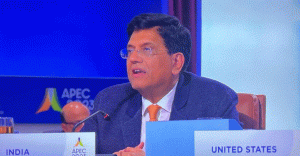
How to ensure post-retirement income is a topic of rising importance in the modern world and the “bucket strategy” seems to be one of the effective means to that end. Nowadays most people undertake stress throughout their working life. Therefore, it has become all the more important to ensure that one does not continue to suffer from financial stress even after retirement – years when many become vulnerable even in terms of health.
One must, therefore, try to follow paths of prudent investment that would rid one of such worries. One of the oft-recommended financial strategies with this objective in mind is known as ‘bucket strategy’, a key element of which is to keep the core capital safe, not allow inflation to erode its worth and then proceed for returns. How does bucket strategy work? The word “bucket” in bucket strategy signifies dividing the whole retirement pool or corpus in 2/3 parts which are referred to as buckets.
Now comes the interesting part. Each part, or bucket, will provide a cash flow of a particular need and could, therefore, carry a distinct risk profile. Investment advisors can illuminate a retiree on how to define his/her own need and accordingly divide the retirement corpus to generate sufficient cash flows with an attendant risk profile.
The commonest three buckets are known as short-term bucket, medium-term bucket and long-term bucket. Each retiree has a unique risk appetite, different needs and a different need of cash flow. But dividing the pool into short-term bucket, medium-term bucket and long-term buckets is the lowest common denominator that would work in most instances.
What purpose does the long-term bucket serve? The long-term bucket money is meant for growing capital in the long-term. It is a portion of the corpus that should ideally not be touched by the individual. “At least 50-55% of the retirement corpus should be invested in the long-term bucket.
One should allow it to grow for at least 6-7 years in order to get the full impact of any benefit (read long-term compounding),” investment strategist and director Wishlist Capital, Nilanjan Dey told News9live.com. Short-term, medium-term bucket This is just the opposite of the long-term bucket.
It should be designed for routine cash flows. As an immediate corollary, it should contain instruments that are liquid. Investment advisors say that this bucket should allow you to cover 10-12 months of expenditure.
From pension to SWP (Systematic Withdrawal Plan), cash flows should be flowing into this bucket. The medium-term bucket could help meet expenditure in 4-6/7-year horizon. Both capital preservation and returns should be the goal of this one.
About 25-30% of the corpus can be placed in this group. Click for more latest Personal Finance news . Also get top headlines and latest news from India and around the world at News9.
Avijit Ghosal has been writing on topics of business, industry and investment for the past three decades. He also writes on the broad economy, infrastructure and issues in banking. He has worked for economic dailies such as the Business Standard, The Economic Times, business magazines such as Business Today, English broadsheet the Hindustan Times and Bengali daily Anandabazar Patrika before joining TV9 Network.
.














